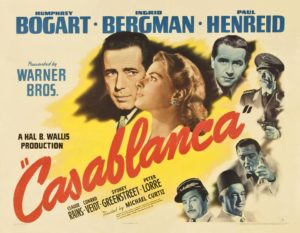For this article, I have selected one of my favorite paintings created by none other than Pablo Picasso. The painting in question is the “Three Musicians”. Before indulging into the actual analysis of this work of art, I would like to say a few words relating to a copy of it which I completed in the 1980’s. At the time, I was living in Zaragoza, Spain and we would usually venture down to a specific local restaurant in the town during the early evening hours. At this particular location the owner and his wife took a strong liking to my eldest son (Joe Jr.) and he was treated as if he was one of the family members whenever we went into the establishment. He was permitted in the kitchen; they gave him a chef’s hat and he could sit and bang on the keys of the piano as much as he so desired. These people thought nothing of all this, however, as a responsible parent my wife and I disapproved of this behavior and halted it in the bud.
In order to show my appreciation to the owner of the restaurant, I created a large duplicate of the “Three Musicians” and as I understand, to this day that painting is still hanging on the wall above the piano.
Enough talk at this point about my painting lets progress now to the master and the real painting. When we first see Picasso’s painting we are attracted to the bright colors as well as to the diverse geometric forms. One of the unique concepts associated with this painting is the limited number of circular forms included on it. Most of the shapes which create this piece are other than round.
We see centered upon the stage three musicians along with their associated instruments. The three performers shown in the painting are a Pierrot, the harlequin as well as a monk. Picasso made good use of Harlequins in his paintings. A review of his work during this time frame would show several as the major topic to contain harlequins. Allegedly, the musicians are fabled to be several of Pablo’s close friends, a Mr. Guillaume Apollinaire and Mr. Max Jacob. The third was reputed to be Picasso himself.
These two friends were both close associates of Picasso and practicing poets. It is thought that the artist created the images with the distinct intent to portray his friends out of a desire to honor their friendship. Apollinaire died prior to the painting’s completion while Jacob later joined a convent.
We can readily make out who is who in the painting as we see the monk on the far right holding what appears to be some sheet music and next to him, we have the harlequin with his guitar. On the left side, we are shown the Pierrot with his clarinet. Behind the performers, we can view a dog lying on the floor. This may seem strange to most westerners however; it is not unusual for Spanish restaurants and bars to have pets roaming around. One particular bar in Zaragoza would allow a stray dog that was fascinated by my children to come into the bar with them (children can go into bars in Spain). The stray had become very attached to them and even would try to protect them if someone were to go towards them in a rapid manner.
To begin our analysis of Picasso’s artwork we must first be assured of what synthetic cubism actually is. In short, it is a form of painting which is a product of textures. Unlike the tradition early cubism, we now encounter a flatter and more collage type of canvas environment. In fact, the process was actually the initial stages of acceptance of collage materials as a serious ingredient for artwork.
The lines in the painting are mostly straight and uniform in their appearance. The colors employed are bright and sharply focused. There is a lack of effective shading of any kind which is indicative of synthetic cubism. These hot primary colors are mostly pure and saturated, relieving the artist of the task of blending and producing shades and shadows. Details are provided not so much by the process of shading, but by the addition of more lines as is evident in the beards of the monk and the harlequin. In order to provide us with a visual sensation of depth, the floor appears further back on one side of the painting than on the other. This was a reality of Spain when I resided there as the rooms were never completely square.
As stated above, I firmly believe this painting to be a tribute to his friends and as such this great artist has achieved his goal. In this painting, he has demonstrated how he and his friends had previously enjoyed life as they joyfully made merriment and were possessed of high spirits in all their endeavors. Years ago, while working at Dunkin Donut, my wife Pam had the opportunity to meet the daughter of Mr. Picasso, unfortunately, I never got the chance. I would have really cherished the chance to pick her mind on subjects concerning her father, but I guess I was not preordained to experience that adventure. I can however still sit back and enjoy his artwork even today.



